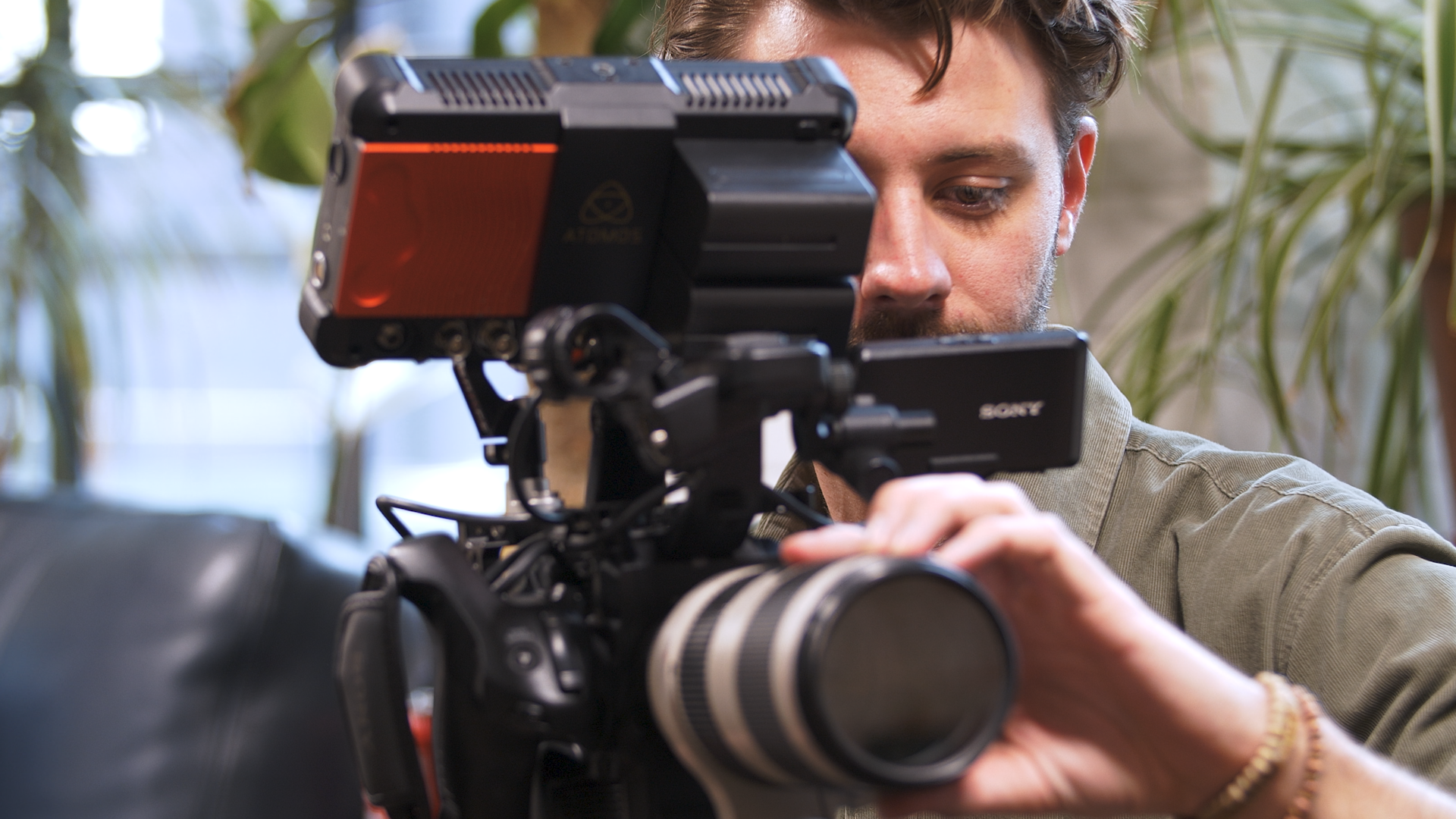Just like the production process, creative editing is a crucial part of any project and, in many cases, it can make or break a video. During a shoot, it’s very important to make sure that you are shooting with the edit in mind. This will make the editing process much easier as you will have lots of options to tell the story from multiple angles.
Reshoots and pickups can be costly and time-consuming, so it’s best to shoot for safety and pick up any angles you might need, however unlikely. There really are very few limits to what you can achieve in the edit if you have plenty of material to work with.
In-production transitions
It’s important to think about in-camera transitions whilst filming, as this is harder to recreate in post-production. Most video editing techniques are dependent on having enough raw footage to make them work.
For instance, if you wanted to change from one location to the next in the edit, you could create a sequence whilst shooting which takes you behind a tree and the trunk takes up the whole frame. Then, in a second location, you would start behind something that takes up the whole frame again and continue the same camera movement to reveal the new scene. In the edit, you can cut these shots together, creating a seamless transition from one location to the next with the impression you haven’t cut away at all.
A similar technique that you may have seen is the match cut, where the focus of the shot, be it a specific person or movement, remains either still or in fluid motion while the scene behind them changes. This can be very effective at showing a passing of time, a contrast between fantasy and reality or a change between the past and present day. However, this is something that needs to be planned for in your shooting schedule, as you will need to match the focus exactly in both scenes.
Post-production transitions
Transitions can also be made in post-production, using editing software to create motions that you didn’t manage to get on camera. One of the video editing techniques that is very ‘in fashion’ at the moment is something called a ‘zoom transition’ or a ‘flip transition’. This technique takes advantage of the motion blur of a quick zoom (added in the edit) to transition to a new shot, usually in a similar location. These can be really effective if used in the right way and not overdone – the surprise factor works best with these transitions, and if the audience becomes accustomed to them, they seem gimmicky and no longer impressive.
In general, we like to stay away from these sorts of transitions and keep to more dynamic, hard cuts, and think about transitions during the production stage. That way, if we do utilise a more creative editing technique, it is because of a stylistic choice, not due to a lack of options from the footage.
Audio transitions
Not all creative video editing techniques are wholly dependent on the visual. Another way to transition between scenes in the edit is to use the audio as a cue. Two shots that are completely different visually can be linked up by a shared piece of audio. For example, if you have someone sitting in their office explaining their company’s manufacturing process, you can keep the audio of that scene rolling as you cut to a shot of the workers actually performing the tasks that the speaker is referring to.
This can also be used in reverse, where the audio from the next shot precedes the visual. For example, if the visual is a man sat staring out the window, the audio of that scene could fade out as the sound of waves becomes louder, and once that audio is established, the next shot can be brought in of the man surfing somewhere far away.
Using audio for your transitions can produce some really interesting cuts but, as above, this works best when you have thought about these kind of effects before post-production This means you can get the best shots to facilitate it.
Experiment
As with everything, it’s really important to keep up to date with the latest video editing techniques as they tend to change regularly. As well as keeping up to speed by reading up on these techniques, it’s important to get out there and experiment with the editing. This really is the best way to create your own style and work out what works for you and what doesn’t.
This could mean you spend some time getting new raw footage for the purpose of playing around with the technique, just using the resources and locations you have on hand. Alternatively, you may have some footage kicking around from an old project that you can re-edit for the purpose of comparing the new techniques to the ones you used initially.
Whatever your preferred style of creative editing, we would always recommend covering all bases during the production stage of your video, and giving yourself plenty of material to work with. This will enable you to make your stylistic decisions by choice, rather than to dig yourself out of a hole.
If you’re currently looking for professional video production services, why not take a look at our portfolio?
